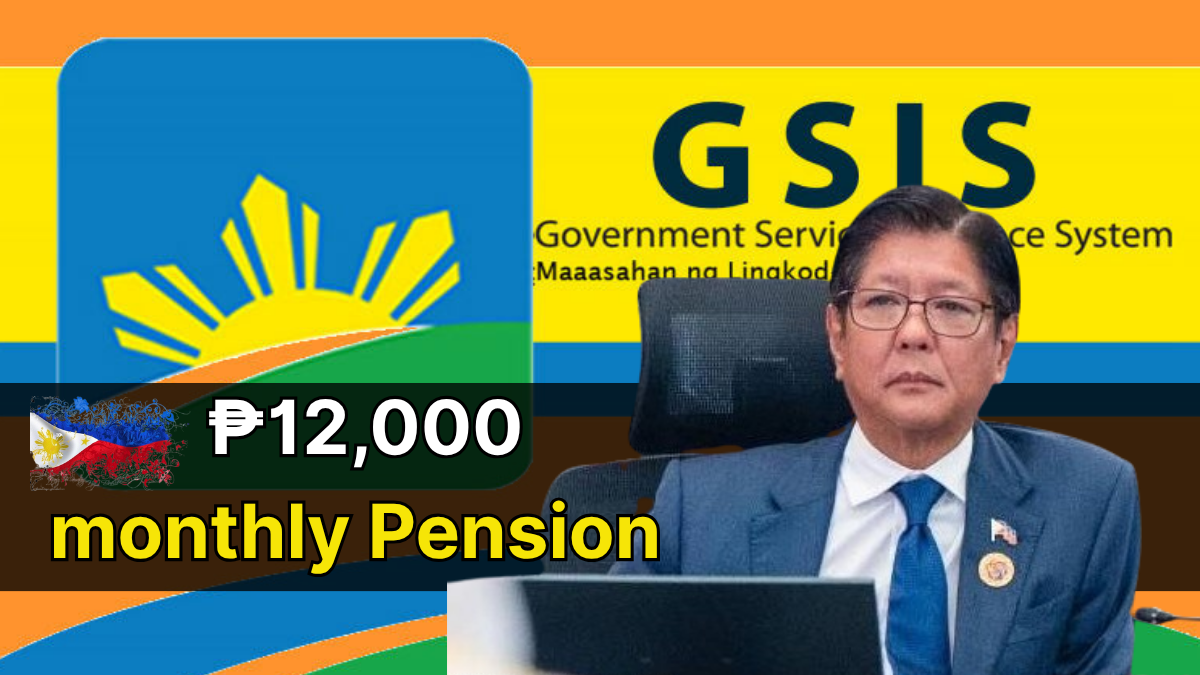The loss of a family member is devastating, especially when that person was the primary breadwinner. For families of deceased government employees in the Philippines, the Government Service Insurance System (GSIS) offers crucial financial support through its survivorship benefit program. The 2025 updates to this program bring significant improvements that make accessing these benefits faster and more straightforward than ever before.

This comprehensive guide walks you through everything you need to know about the GSIS survivorship benefit, from eligibility requirements to the step-by-step application process. Whether you’re a widow, widower, or dependent child of a GSIS member, understanding these updates could mean the difference between financial hardship and stability during an already difficult time.
Understanding the GSIS Survivorship Benefit
The GSIS survivorship benefit serves as a financial lifeline for families who have lost their primary income source. This pension program provides monthly payments to eligible dependents of deceased GSIS members or pensioners, helping maintain household stability when it’s needed most.
The program operates on the principle that government service merits continued support for families even after the employee’s passing. Unlike one-time death benefits, the survivorship benefit provides ongoing monthly income that can last for years, making it an essential safety net for Filipino families.
Who Qualifies for Benefits in 2025?
Eligibility for the GSIS survivorship benefit follows specific criteria designed to protect genuine dependents while preventing fraudulent claims. The primary beneficiary must be the legal spouse of the deceased GSIS member or pensioner. This requirement emphasizes the importance of formal marriage recognition under Philippine law.
The deceased member must have completed at least 15 years of government service. This service requirement ensures that the benefit goes to families of employees who made substantial contributions to government operations. However, there are exceptions for members who died due to work-related incidents or illnesses.
When no legal spouse exists, dependent children under 21 years old become eligible beneficiaries. Children with permanent disabilities may continue receiving benefits beyond age 21, provided they remain financially dependent and unmarried.
Remarriage or cohabitation disqualifies widows and widowers from continuing to receive benefits. This policy aims to ensure benefits reach those who genuinely need financial support after losing their spouse.
Essential Documents for Your Application
Preparing proper documentation is crucial for a smooth application process. The death certificate of the GSIS member or pensioner serves as the primary document establishing the claim’s validity. This certificate must be an official copy from the Philippine Statistics Authority or local civil registry.
Marriage contracts or certificates prove the legal relationship between the deceased and the claimant. For dependent children, birth certificates establish their relationship to the deceased member. These documents must clearly show the family connections required for benefit eligibility.
Valid identification of the claimant, such as a driver’s license, passport, or unified ID, verifies the applicant’s identity. The GSIS Survivorship Claim Form, available through official GSIS channels, must be completed accurately and submitted with supporting documents.
Proof of non-remarriage may be required for widows and widowers. This documentation helps GSIS verify that claimants remain eligible for continued benefits under program guidelines.
Benefit Amounts and Payment Structure
The monthly survivorship pension amount depends on several factors, including the deceased member’s service record, final salary, and contribution history. Active members with 15 or more years of service typically generate survivorship benefits ranging from ₱5,000 to ₱12,000 monthly for their beneficiaries.
When the deceased was already a retired pensioner, survivors generally receive 50% of the original pension amount. This calculation ensures that families maintain a portion of the income they relied on during the member’s retirement years.
Families with dependent minor children may receive additional allowances of ₱1,000 to ₱2,000 per child. These supplementary payments recognize the increased financial burden of raising children as a single parent or guardian.
The exact benefit amount requires individual calculation based on the member’s specific service record and contribution history. GSIS representatives can provide precise figures once the application review process begins.
Step-by-Step Application Process
The 2025 updates emphasize digital accessibility, making the application process more convenient for grieving families. Start by gathering all required documents and ensuring they meet GSIS standards for clarity and authenticity.
Create an online account through the official GSIS website or download the GSIS Touch mobile application. These digital platforms provide secure access to application forms and document submission portals. New users need to verify their identity through the registration process.
Upload required documents using the eGSISMO system or GSIS Touch app. The digital submission process eliminates the need for physical visits to GSIS offices in most cases. Ensure all uploaded documents are clear, complete, and properly labeled.
GSIS may schedule verification appointments for certain applications. These appointments can be conducted virtually or in-person, depending on the specific case requirements. Prepare to answer questions about your relationship to the deceased and your current living situation.
Track your application status through the online portal or mobile app. Real-time updates keep you informed about processing progress and any additional requirements. This transparency reduces uncertainty during an already stressful time.
Upon approval, GSIS will notify you through your registered contact information. Payment distribution occurs through eCard systems or direct bank transfers, providing secure and convenient access to your benefits.

Key Improvements in the 2025 Update
The latest GSIS updates focus on efficiency and user experience. Processing times have been reduced to 30 working days for complete applications, significantly faster than previous timelines. This improvement helps families access needed financial support more quickly.
Digital submission capabilities eliminate the need for long queues at GSIS offices. Families can complete most application steps from home, reducing travel costs and time away from other important matters during their grieving period.
Clearer communication about eligibility requirements helps potential claimants understand their status before applying. This transparency reduces application rejections and streamlines the overall process.
Automated revalidation reminders ensure continuing beneficiaries maintain their eligibility status. These notifications help prevent benefit interruptions due to missed deadlines or documentation updates.
Common Challenges and Solutions
Many applicants struggle with document preparation, particularly obtaining certified copies of older records. Contact the Philippine Statistics Authority or relevant civil registry offices well in advance to secure required certificates.
Understanding eligibility requirements can be confusing, especially in complex family situations. GSIS customer service representatives can provide clarification about specific circumstances before you submit your application.
Technical difficulties with online platforms may arise, particularly for users unfamiliar with digital systems. GSIS offices can provide assistance with online applications or accept physical document submissions when necessary.
Processing delays sometimes occur when applications lack required information or documentation. Double-check all requirements before submission to avoid unnecessary delays in receiving benefits.
Planning for Long-term Financial Security
While GSIS survivorship benefits provide crucial support, they may not cover all household expenses. Consider developing a comprehensive financial plan that includes these benefits alongside other income sources or savings.
Dependent children should understand how benefits may change as they age or achieve certain milestones. Planning for education expenses and future independence helps ensure long-term family stability.
Regular revalidation requirements mean beneficiaries must maintain updated records with GSIS. Set reminders for important deadlines and keep personal information current to avoid benefit interruptions.
Consider consulting with financial advisors familiar with government benefits to maximize your family’s financial security. Professional guidance can help optimize benefit usage and plan for future needs.
Frequently Asked Questions (FAQs)
1. Who is eligible for the GSIS survivorship benefit?
Eligible beneficiaries include the legitimate spouse of the deceased member or pensioner, dependent children under the age of 21, or children of legal age who are incapacitated.
2. What documents are required to apply for survivorship benefits?
Applicants typically need to submit the deceased member’s death certificate, marriage certificate, birth certificates of dependent children, a valid government-issued ID of the applicant, and the GSIS Survivorship Application Form. Additional documents may be required depending on individual cases.
3. How much can I receive as a survivorship benefit?
The amount varies depending on the deceased member’s length of government service, pension contributions, and applicable laws. Generally, the spouse is entitled to 50% of the member’s basic monthly pension, while eligible children share the remaining 50%.
4. How long does it take to process a survivorship benefit application?
The processing time may vary, but GSIS typically provides updates to applicants within 2-3 months following the submission of complete documentation.
5. Can the survivorship benefit be claimed retroactively?
Yes, survivorship benefits are typically retroactive to the date of the member’s death, provided that the application is filed within the prescribed period.
6. How do I follow up on my application?
You can contact GSIS directly through their official hotline, email, or by visiting the nearest GSIS branch. Ensure you have your tracking number or reference details ready for faster assistance.
7. Are cohabiting partners eligible for survivorship benefits?
No, only legally married spouses are eligible. GSIS requires proof of legal marriage to process the claim.
8. Is there a limit to the number of children eligible for the benefit?
No, all dependent and qualified children either legitimate, legally adopted, or illegitimate are entitled to an equal share of the benefit as stipulated in GSIS policies.
Maximizing Your GSIS Benefits
The GSIS survivorship benefit represents more than just monthly payments, it’s a bridge to financial stability during one of life’s most challenging transitions. The 2025 updates demonstrate GSIS’s commitment to serving Filipino families with greater efficiency and compassion.
Take advantage of the improved digital systems to streamline your application process. Keep all documentation organized and updated to ensure continued benefit eligibility. Most importantly, don’t hesitate to seek help from GSIS representatives when you need clarification or assistance.
The survivorship benefit exists to honor the service of government employees by caring for their families. Understanding and accessing these benefits ensures that your loved one’s years of public service continue to provide security and support for those they cared about most.
For further clarification or additional questions, please consult GSIS directly or visit their official website.
For More Information Click HERE




